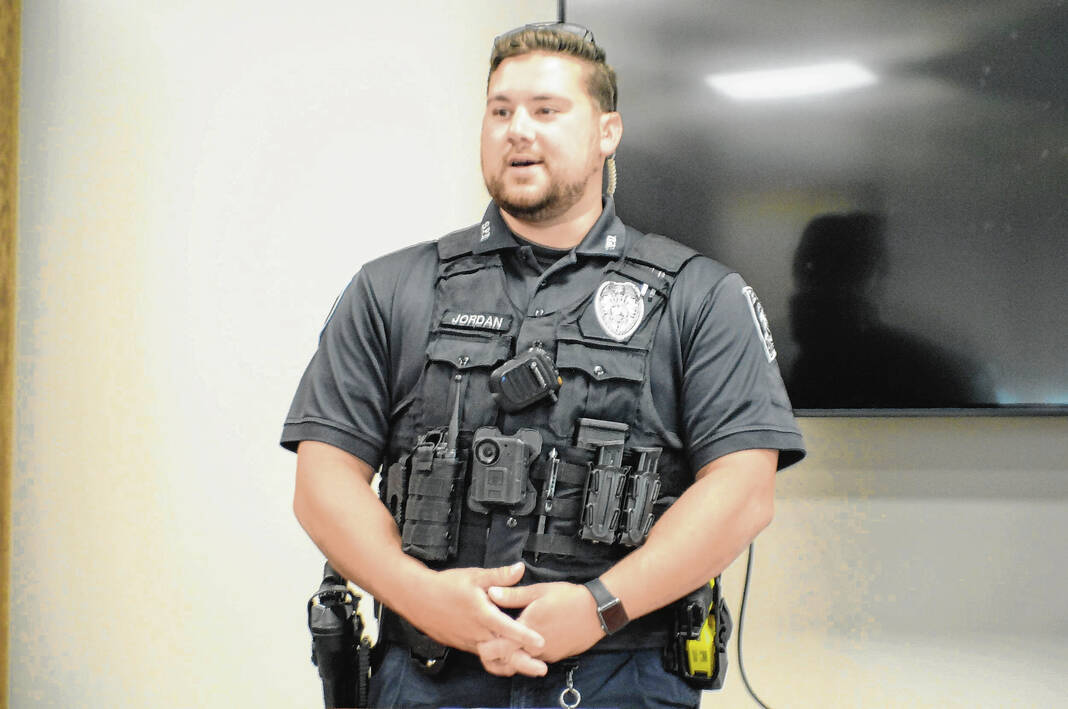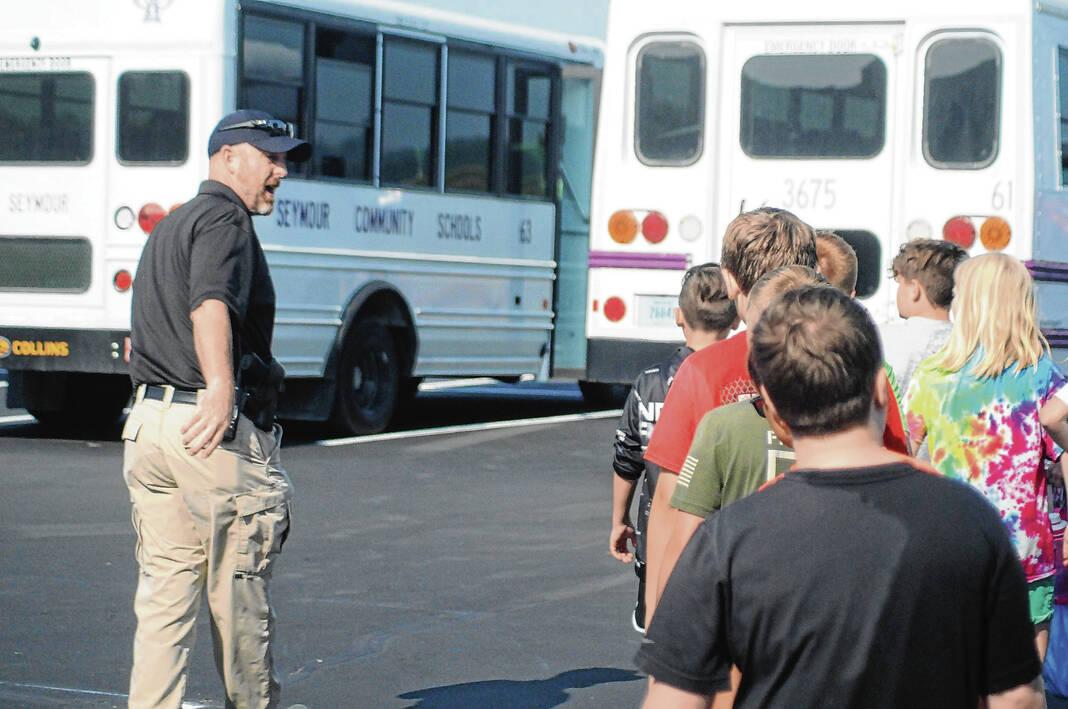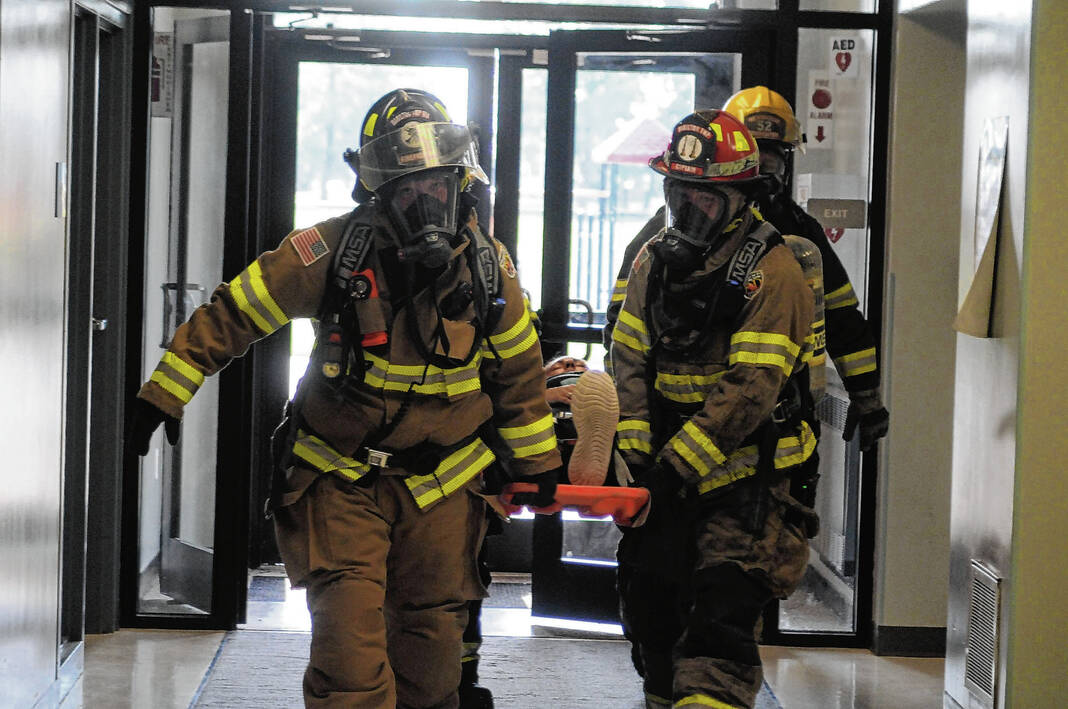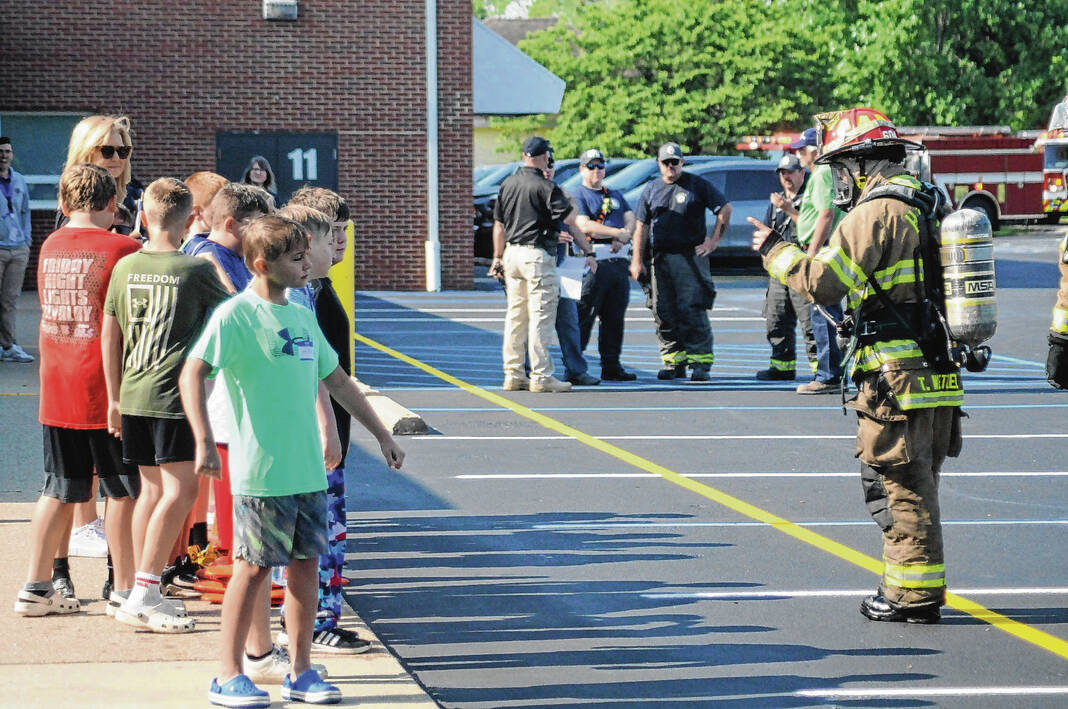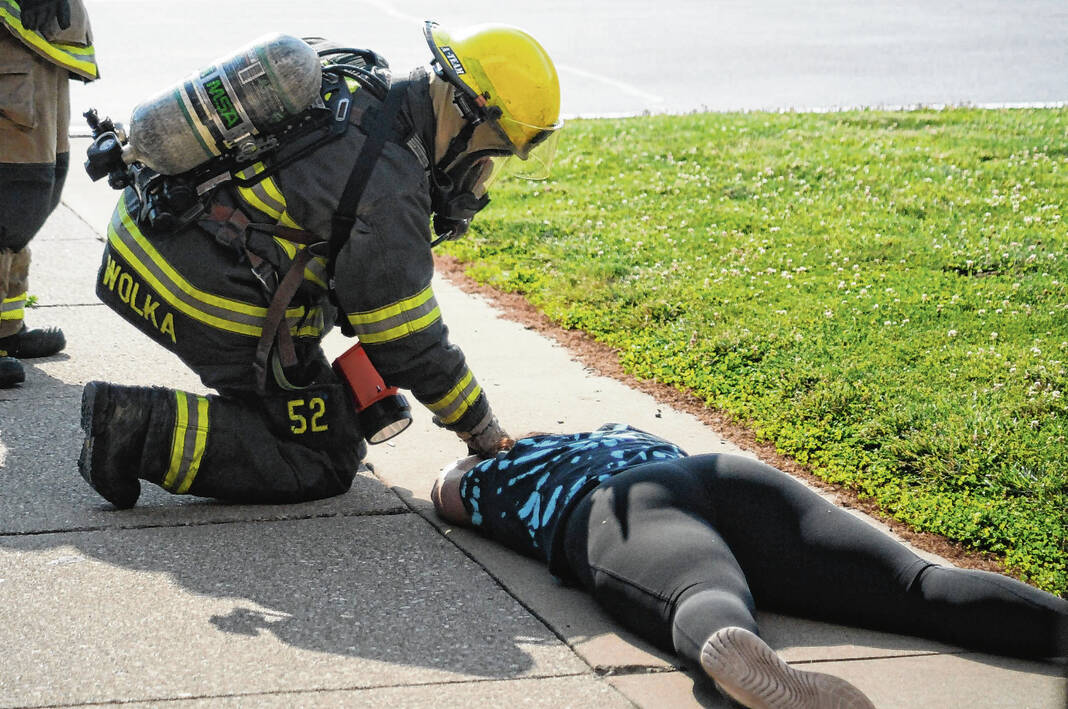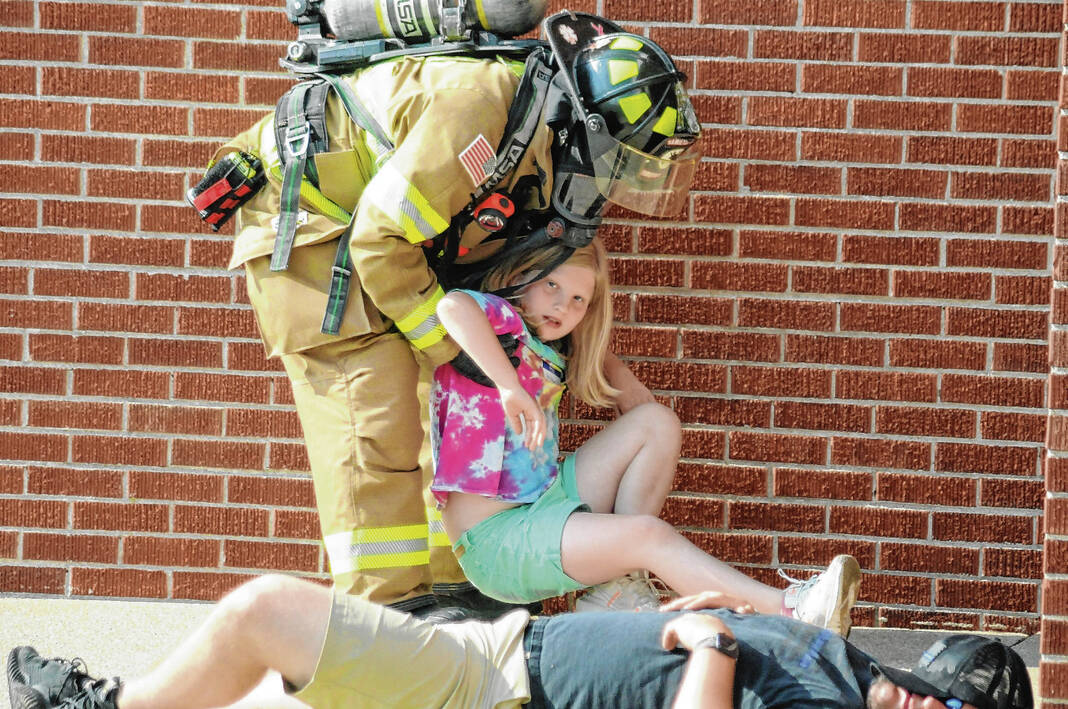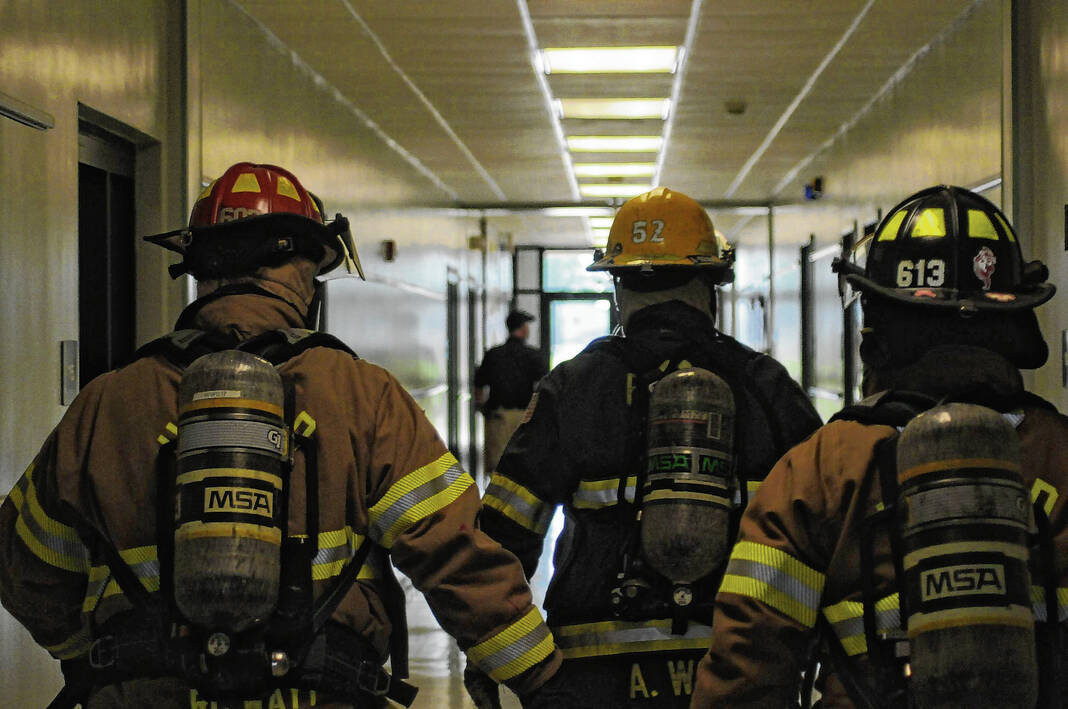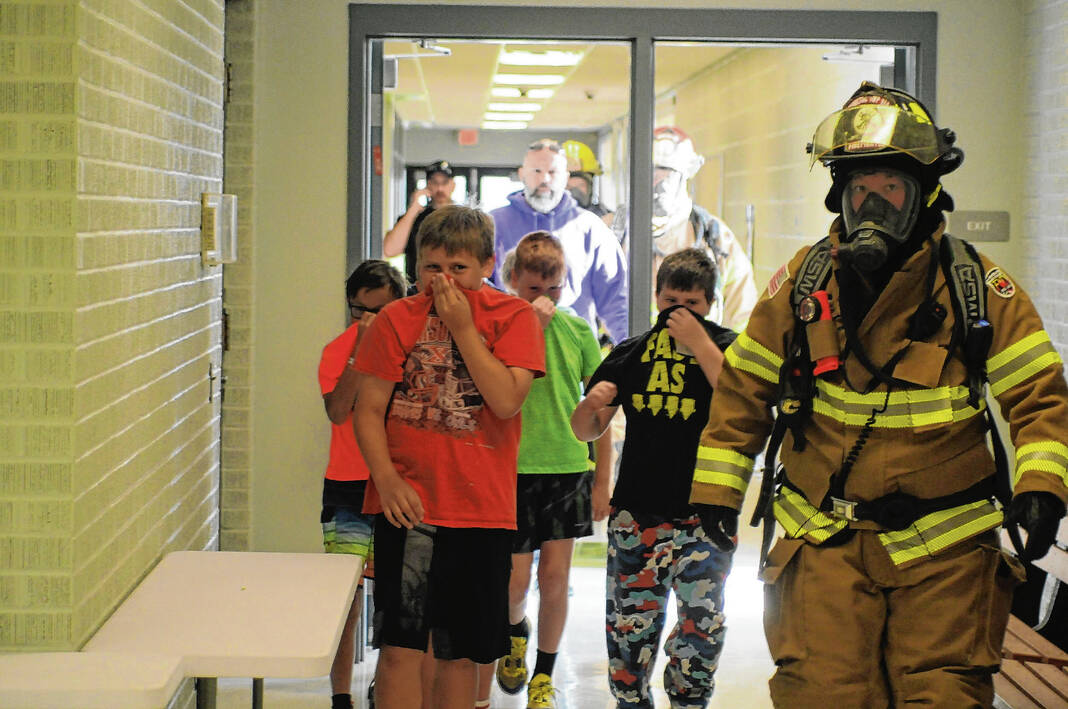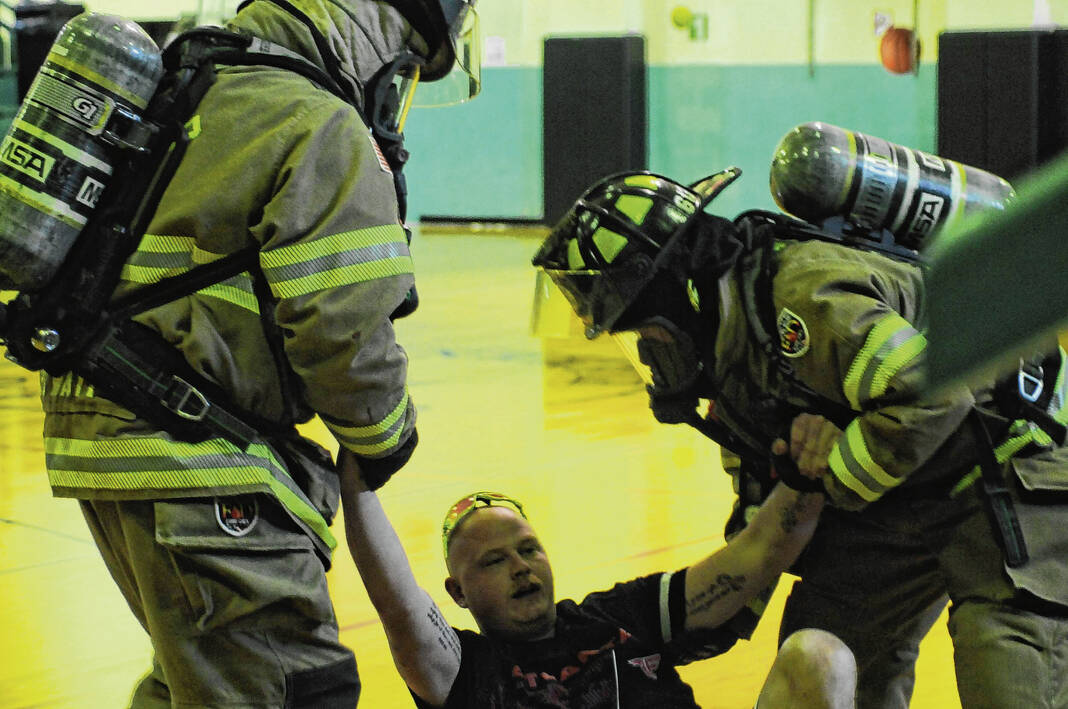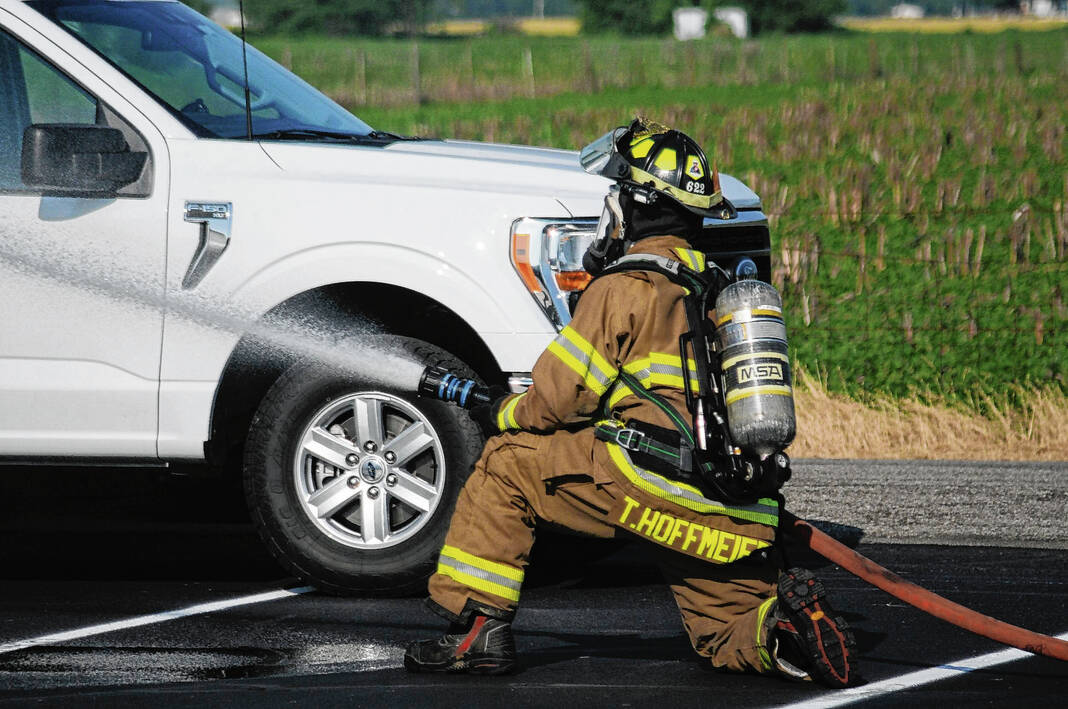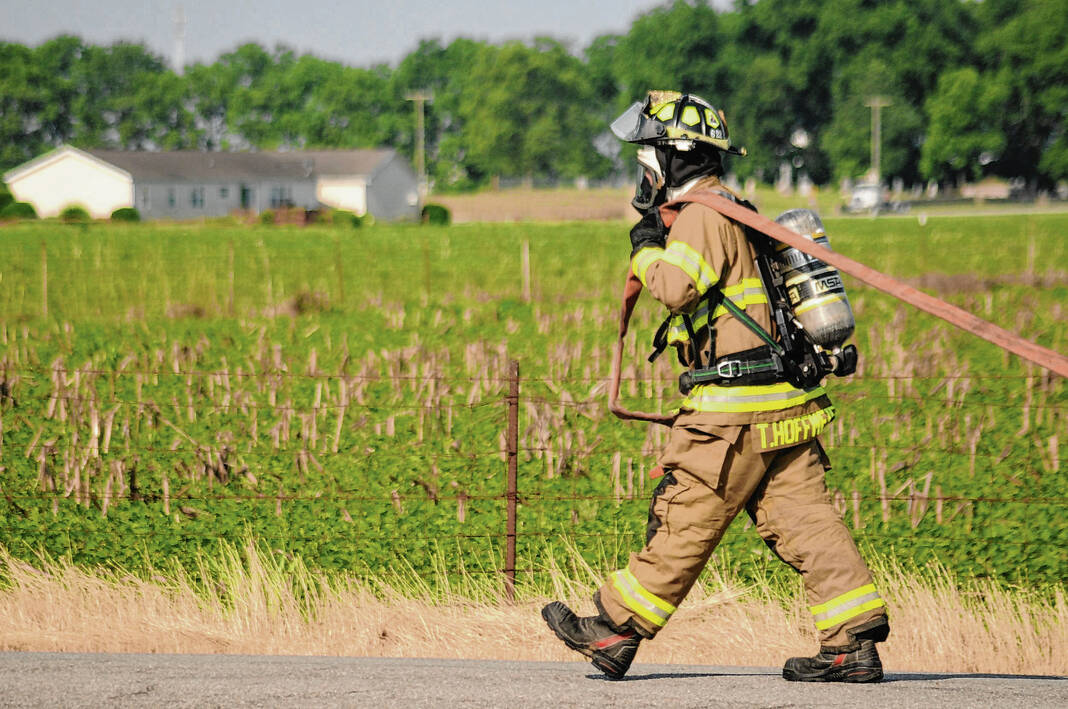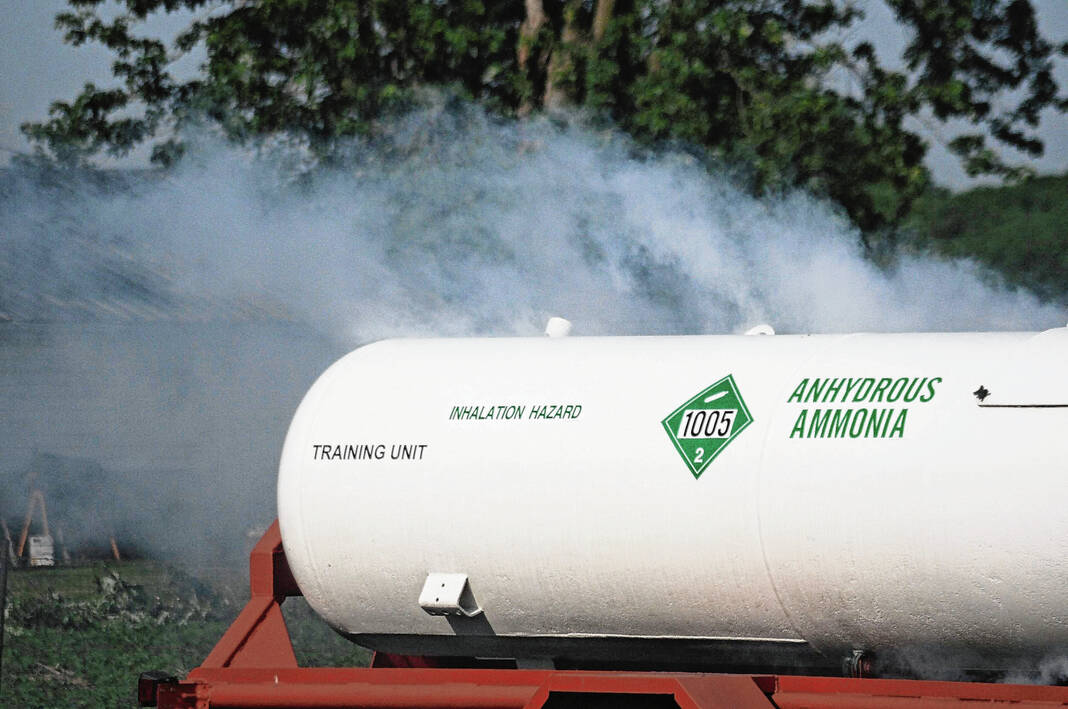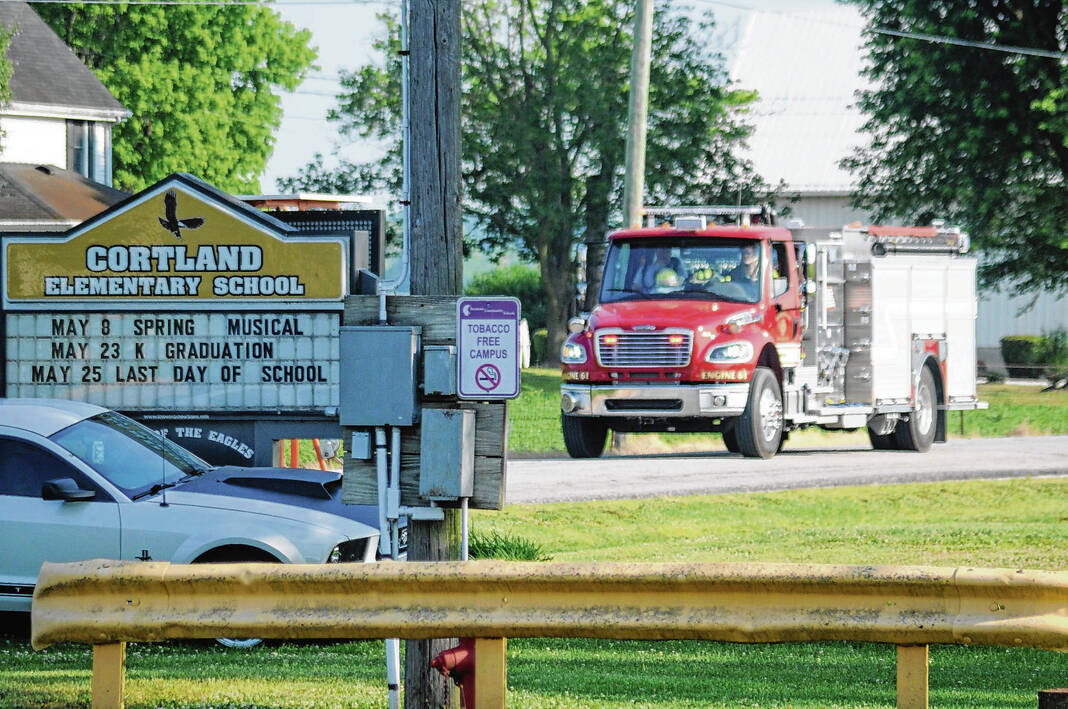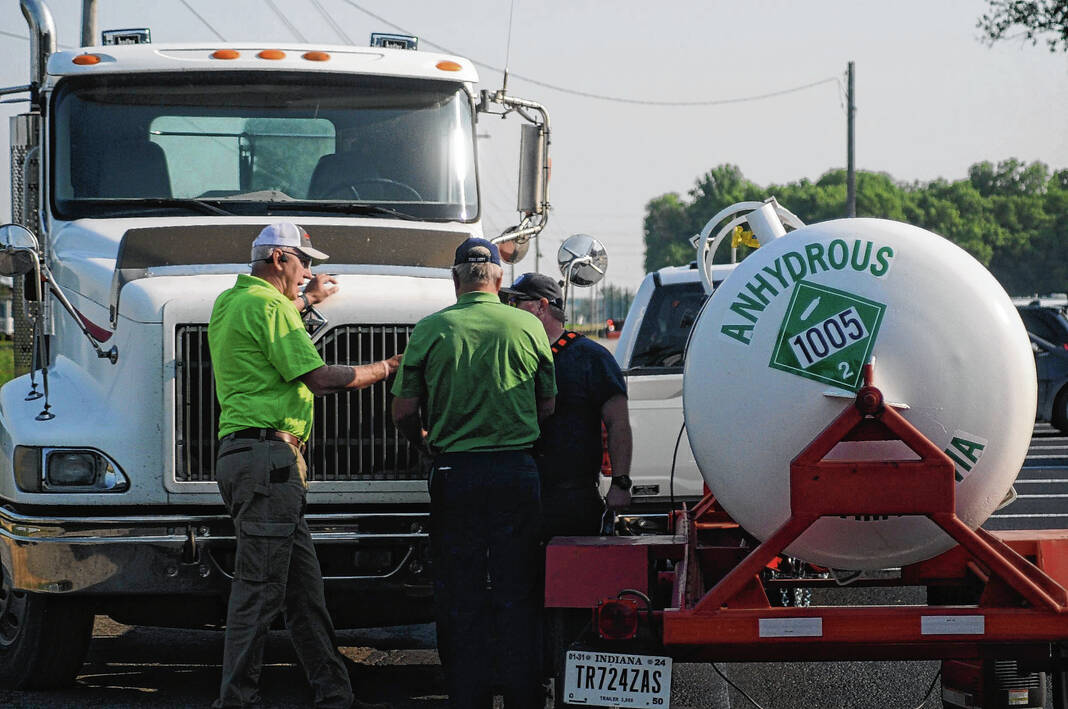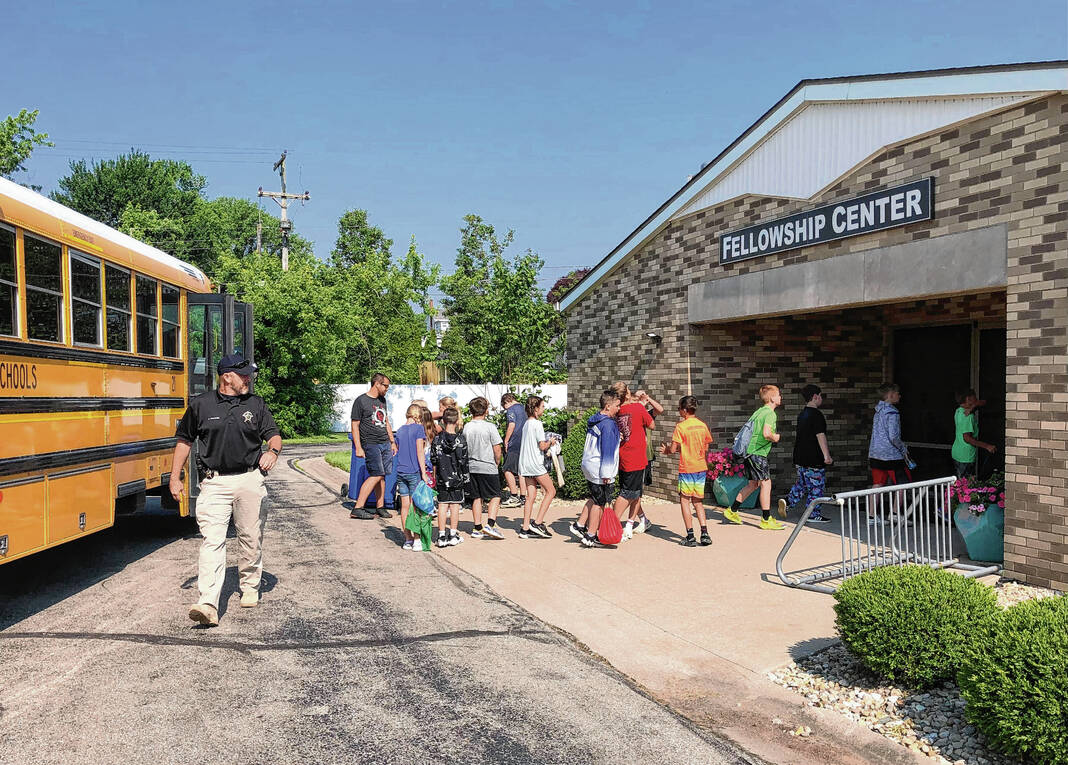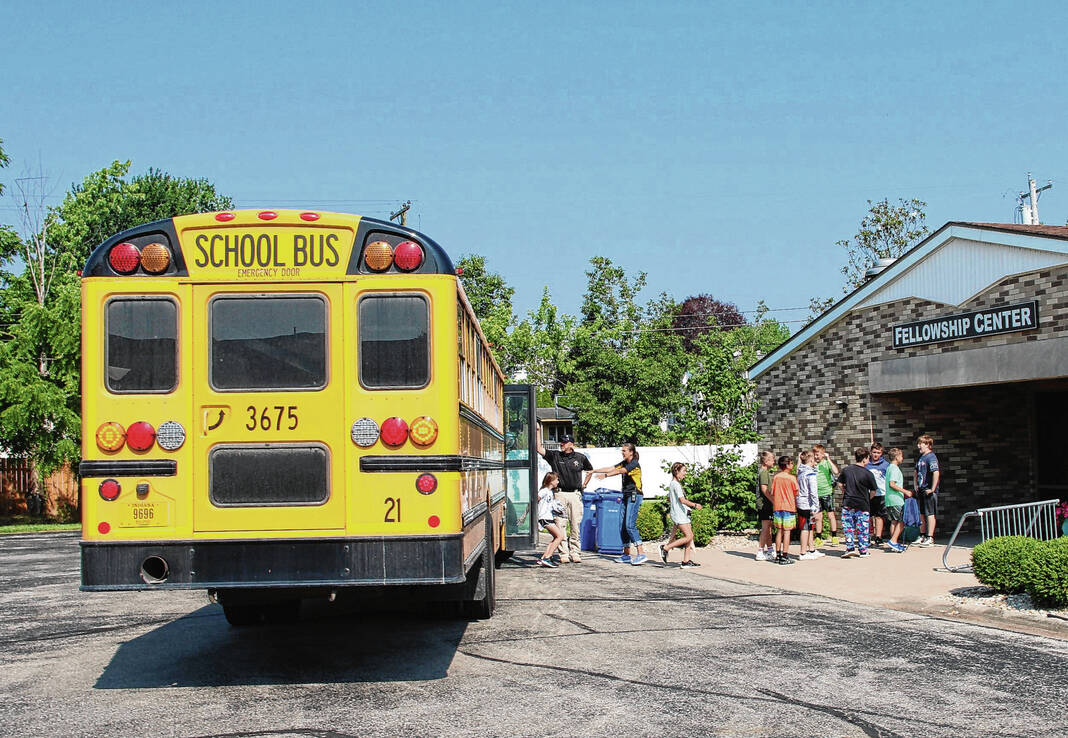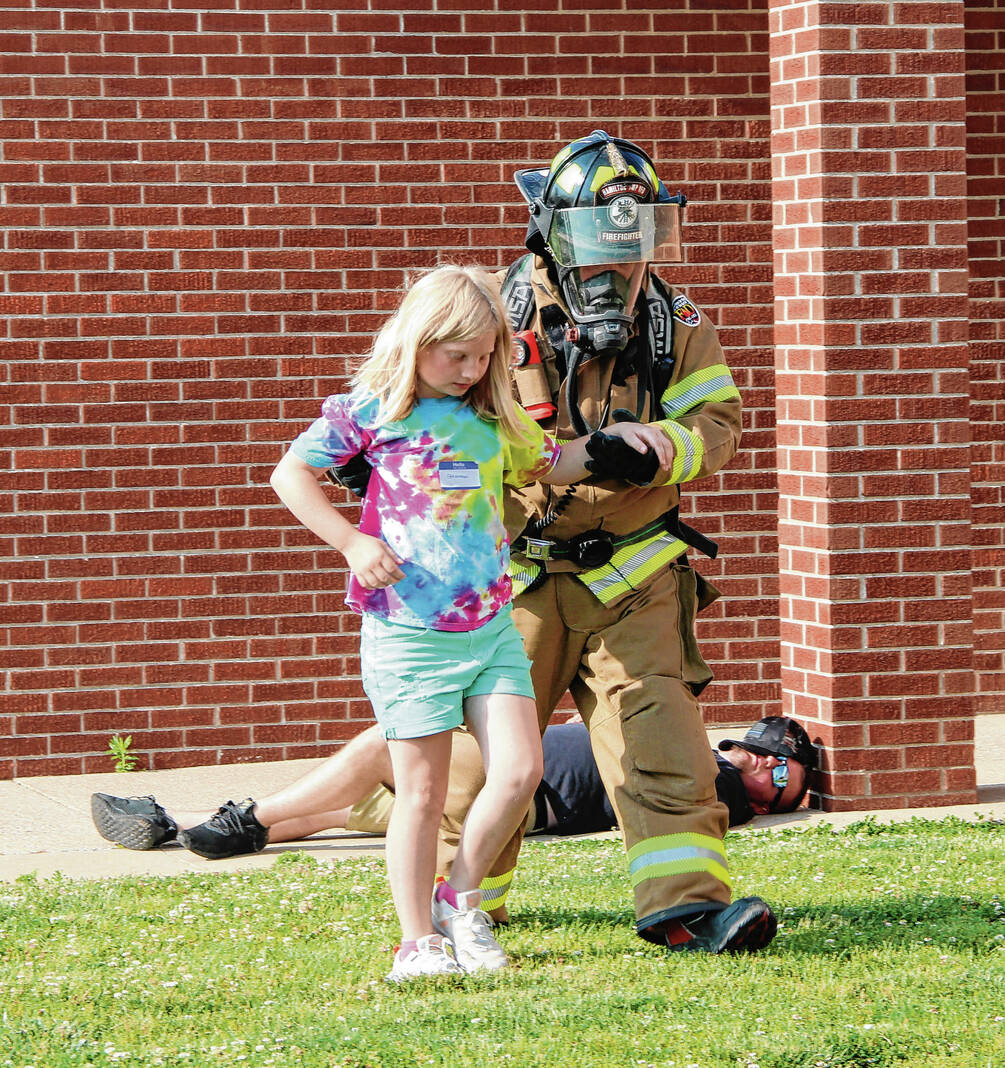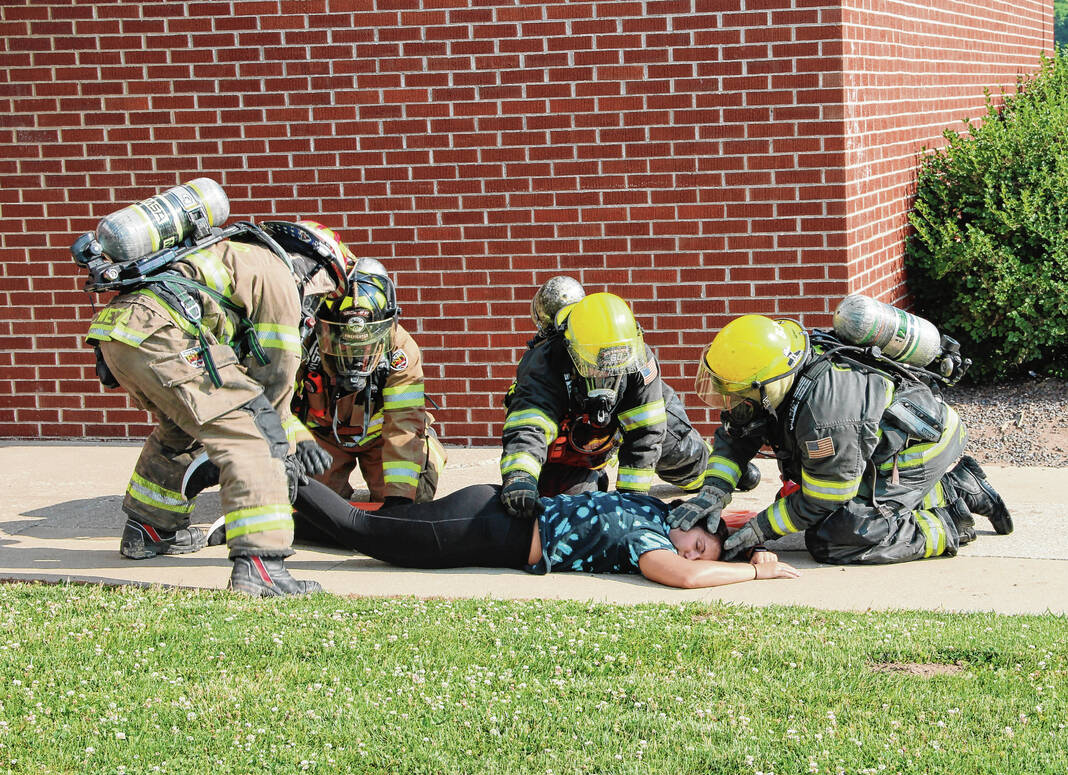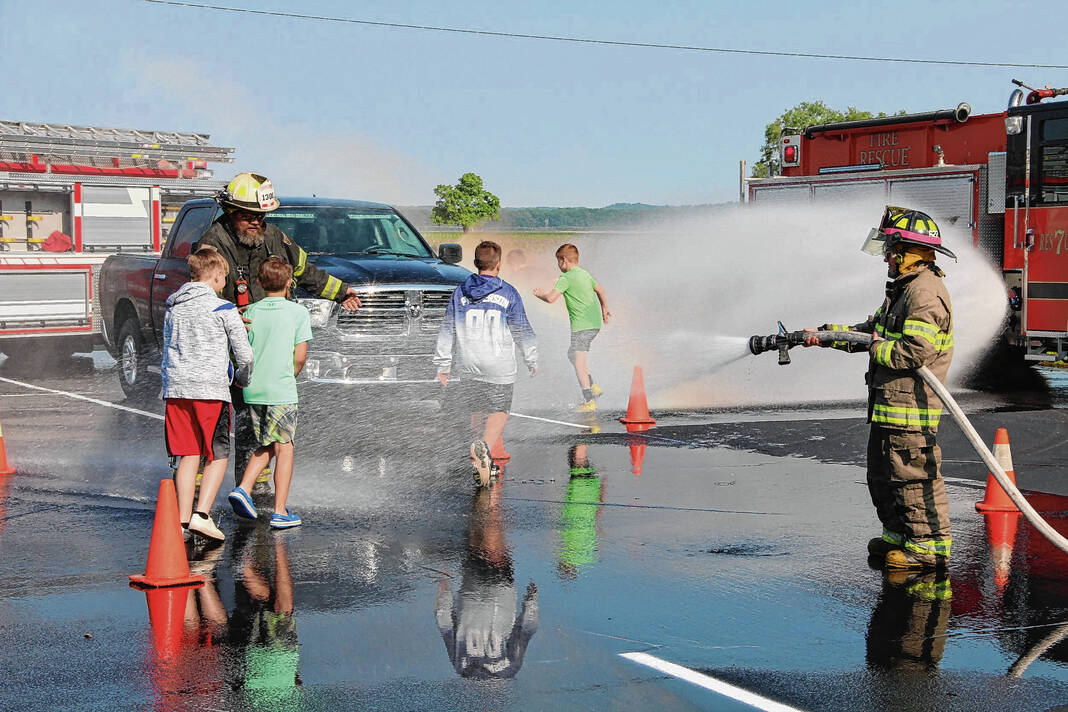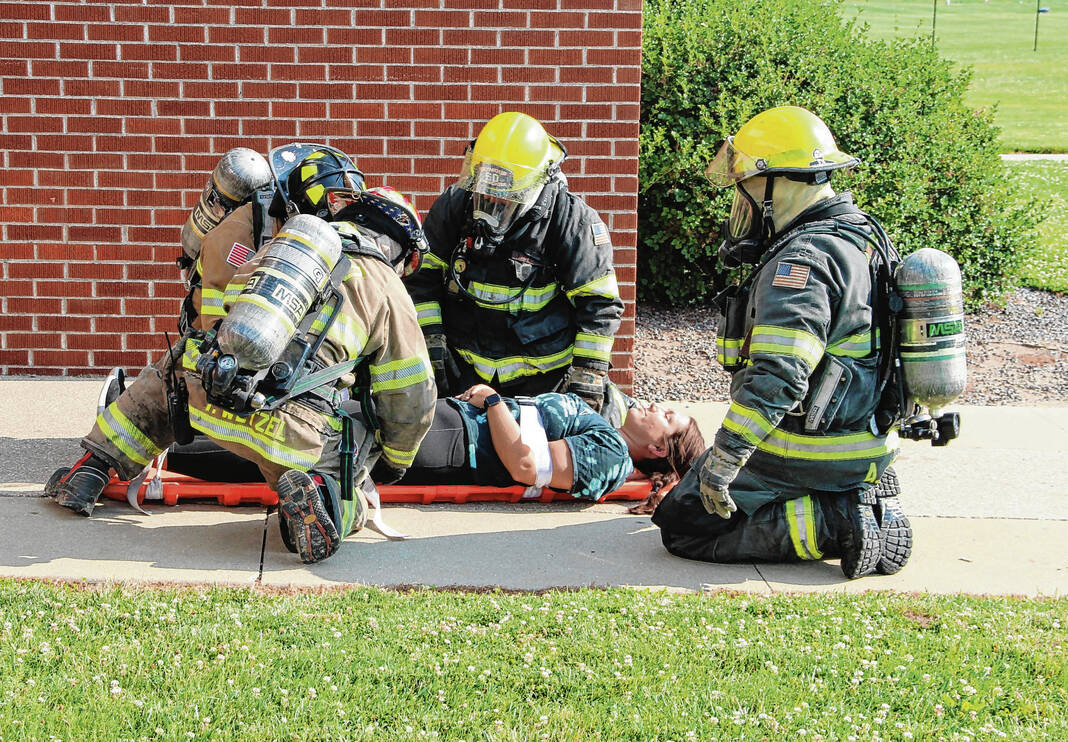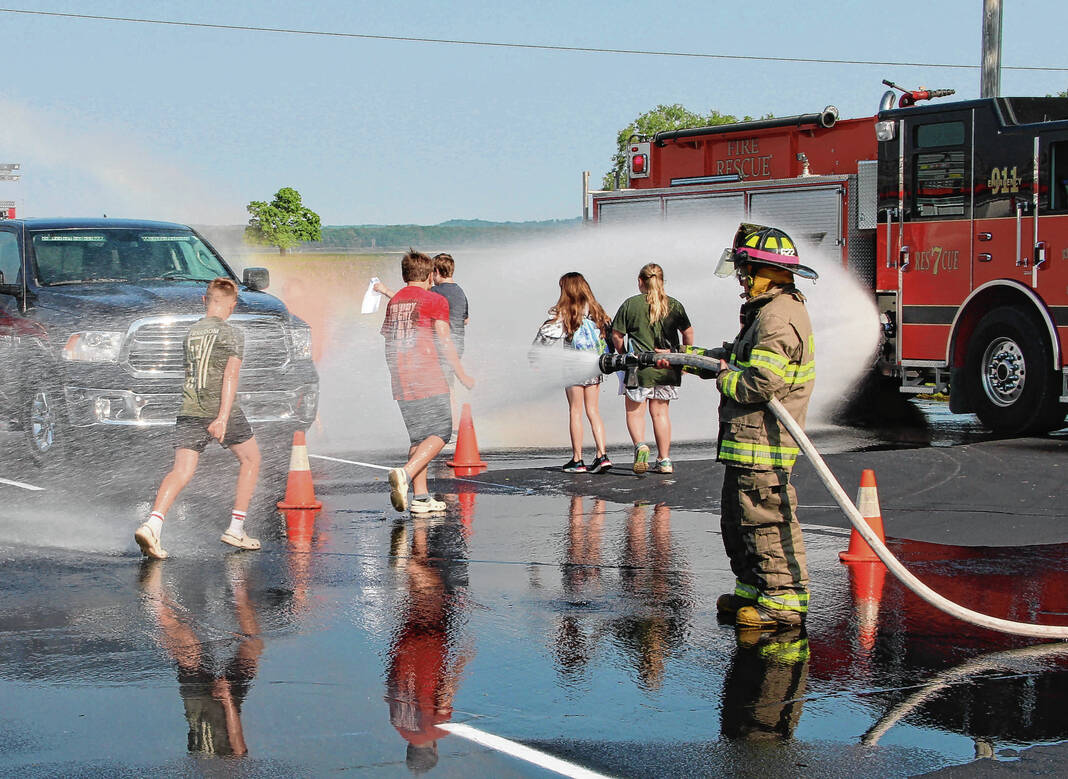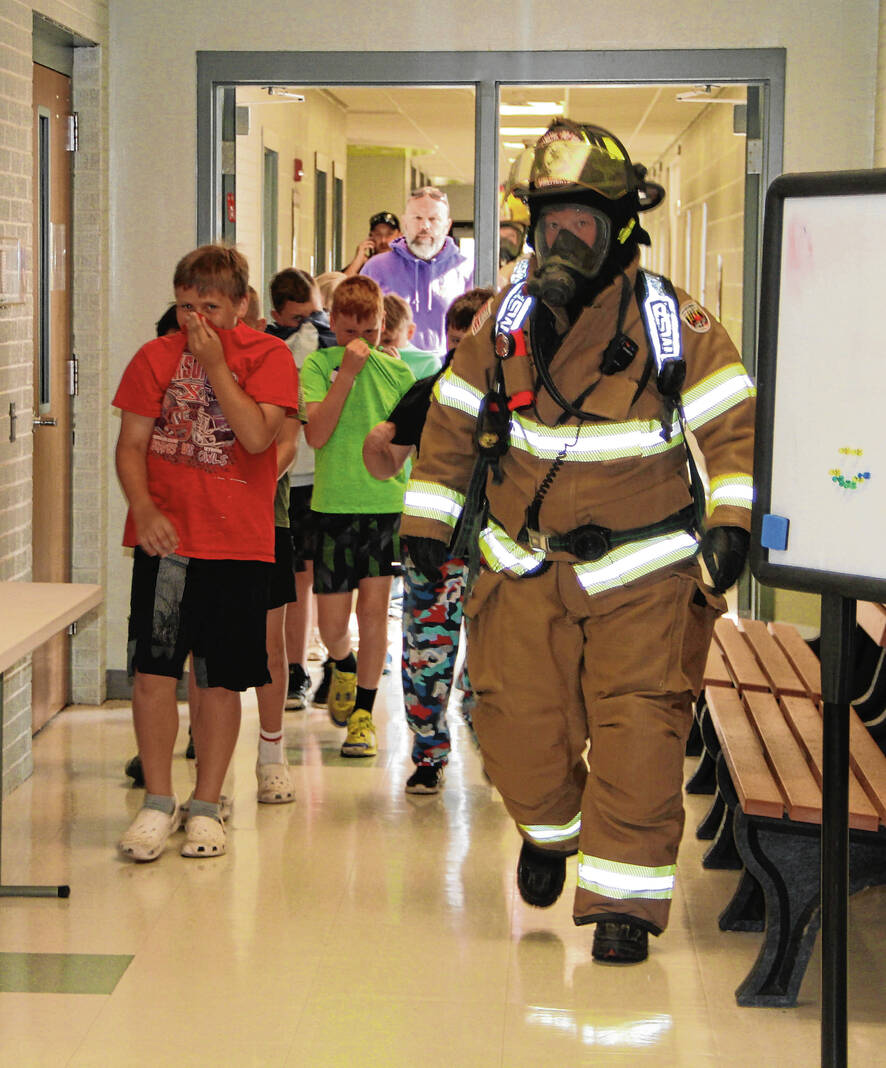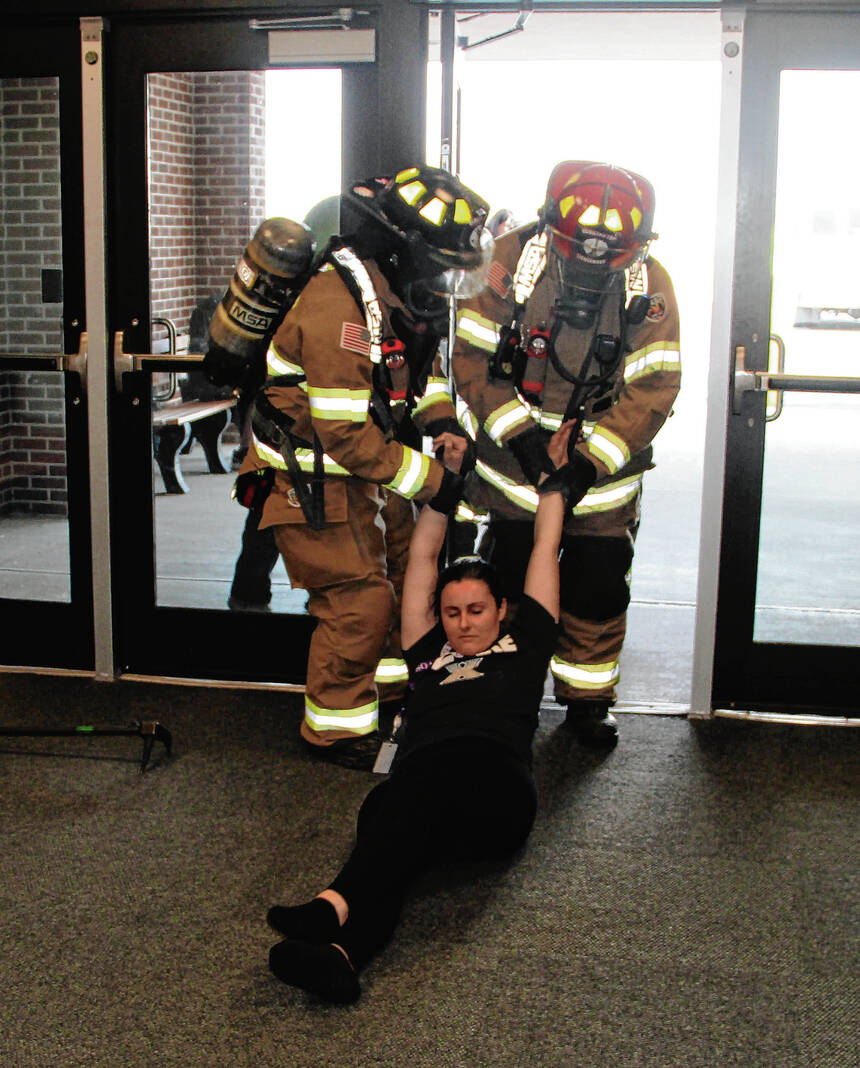Emergency responders train diligently to handle many situations, and people often hear of them responding to fires, floods, shootings or other natural disasters.
But how would local emergency responders react in a catastrophic event where all hands are on deck?
“This is not something we normally train for,” said Nick Klinger, deputy director and exercise coordinator for the Jackson County Emergency Management Agency. “We are all used to hearing active shooter and fire, but this is something unexpected.”
After six months of planning with the Hamilton Township Volunteer Fire Department in Cortland, Klinger involved many different departments in the county for a multiagency response to a catastrophic release of anhydrous ammonia on Friday.
Anhydrous ammonia is a high-pressurized nitrogen fertilizer commonly used in agriculture and comes in a white pressurized tank.
Klinger said this chemical is often transported and used among many different farms throughout the county.
“We wanted something realistic,” he said.
In this scenario, a semitrailer struck an anhydrous ammonia tank rupturing it and releasing the gas into Cortland Elementary School, where students and staff were exposed to the toxic gas.
A training unit of an anhydrous ammonia tank was used during the exercise, so no chemicals were actually released, but emergency responders had to work together to help students and staff evacuate the building and treat those who were harmed by exposure to the toxic gas.
Jerry Boger, director of safety and environmental at Premier Companies, said in the event anhydrous ammonia was to infiltrate a closed space, individuals inside would need to evacuate and find fresh air.
Boger said the effects of the gas can cause burning of eyes, inability to breathe and even death if someone was in a dense cloud of it.
With technology now, Boger said these tanks are built to withstand higher amounts of impact than in the past, so the likelihood of a catastrophic rupture is less than 1%.
This emergency exercise involved the help and support of multiple agencies, including Seymour Community School Corp., Jackson County Emergency Management Agency, Jackson County Sheriff’s Department, Seymour Police Department, Schneck Medical Center, Seymour Fire Department, Hamilton Township Volunteer Fire Department, Premier Companies and Jackson County Emergency Medical Services.
This simulation examined and evaluated the multiagency response to entrapped students and staff, fatalities, evacuation and offsite reunification, communication between agencies, supplies and equipment and utilization of existing equipment.
Sixteen children attending the School Resource Officer Summer Leadership Camp and other community members participated in the exercise as students and staff affected by the toxic gas release.
Klinger said even though they were using anhydrous ammonia for the emergency exercise, the training is important because it could happen with any other chemical.
“Any exercise we do is important, but this could happen with any other chemical,” he said. “We get a lot of propane and gasoline that comes through here, and it’s a situation we can adapt to.”
Klinger said it’s difficult to write a plan for every individual scenario, so they try to have a single plan they can use and adapt to depending on the situation.
With children involved in the exercise, school administrators also were involved in making sure the kids are accounted for and are safely unified with their parents.
“This gives the principal and other administrators the opportunity to get involved in something they don’t normally get to do,” Klinger said.
He said the last anhydrous ammonia emergency exercise was conducted here between 1999 and 2000.
“This gives our emergency responders the opportunity to train on something they haven’t done in a long time, and it also helps them build relationships with the other departments for future exercises,” he said.
Talmadge Reasoner, assistant superintendent for Seymour Community School Corp., participated in the emergency exercise evaluating school administration and served as a connector between district resources and building-level resources.
Reasoner said in a situation like this, he would be onsite supporting the administration through any issues and provide resources that are needed.
As part of Seymour Community School Corp., their role in this multiagency response was conducting an offsite reunification location to make sure the children are safe and accounted for before unifying with their parents.
During this exercise, they were looking into how the reunification process functions and make it more efficient for everyone involved.
Reasoner said in this type of situation where reunification is needed, it would be a district response involving many different departments and resources.
“I always look at any kind of response as spokes on an old wheel where there are a few key players at the hub of that wheel that interact with the spokes of the wheel,” he said. “Us along with EMA and other agencies are in that hub that connect information to be able to mitigate this response effectively.”
Reasoner said the exercise was important, as it will build relationships with first responders and find out where they need to improve in their communication branches.
After the children were evacuated from the elementary school, those who were not considered injured as part of the exercise were sent to First Baptist Church in Seymour to be reunited with their parents.
With children and staff evacuated and unified with their parents as part of this emergency exercise, there was only one piece left.
A mock press briefing was held at Seymour Fire Station 2 on West Second Street for public information officers to practice answering questions under the pressure of media and cameras.
Dan Davis, president and CEO of the Community Foundation of Jackson County, along with reporters from The Tribune fired off questions asking about the events that occurred at Cortland Elementary School.
“We want them to get that feel of if we had a major event what it would be like for them to be in front of the cameras and getting the hard questions that they may not know the answers to,” Klinger said.
The emergency exercise was completed with an evaluation where each department was able to discuss what their strengths were and where they needed improvement.
At the end of the day, the local emergency departments and other agencies were able to learn from this experience in expecting the unexpected.

